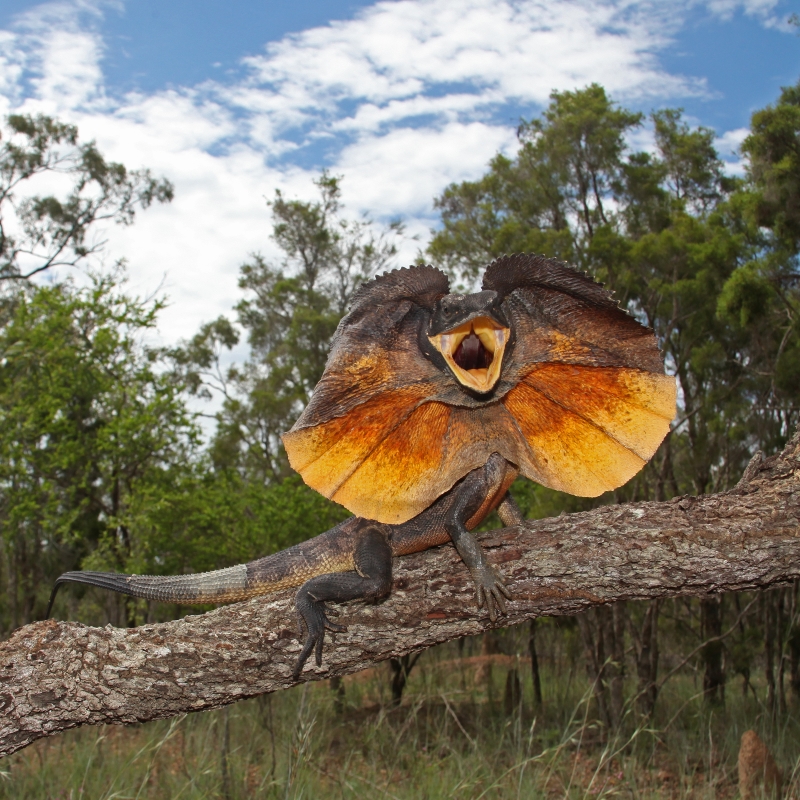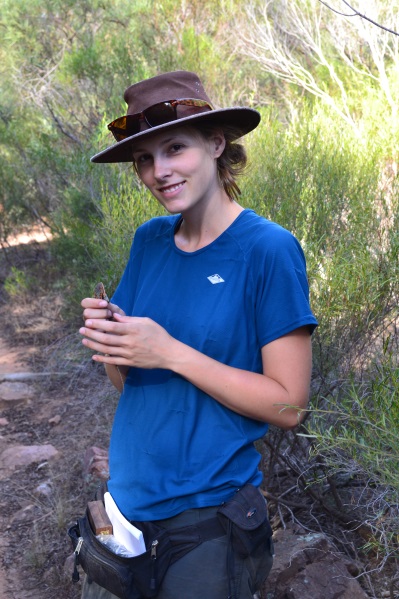I think high quality peer review draws on the knowledge of a large and diverse pool of experts to recognise good research and improve manuscripts. All done in a timely manner so it doesn’t hold up important findings.

Claire McLean is a Research Fellow at the University of Melbourne and first author of a recent Proceedings B paper entitled Red carotenoids and associated gene expression explain colour variation in frillneck lizards. We asked Claire about her research, the journal’s move to an open peer review model and for her thoughts on transparency and its wider role in the quality of peer review.

Firstly, tell us about your research?
My research focuses on the evolution and maintenance of animal colour variation and its role in the formation of new species (speciation). I use a combination of genetics and genomics, field surveys, colour analyses and behavioural studies to answer my research questions. Our Proceedings B paper investigates the mechanistic and genetic basis of colour variation in the iconic frillneck lizard. The frillneck lizard’s frill is one of the largest ornaments relative to body size of any vertebrate and varies from red to yellow across the species’ geographic range. We show that, unlike other lizards, redder hues are due to a greater proportion of red carotenoids relative to either dietary yellow carotenoids or self-synthesised pteridine pigments.
What implications does your research have on the field?
Determining how animals produce colour is essential to understand how colour signals evolve and the information they convey. Reptiles exhibit a huge array of skin colours, produced by a complex combination of cell and pigment types; however, the genes controlling the production of these colours are largely unknown. In lizards, red coloration may be produced by carotenoid or pteridine pigments. While animals are able to synthesise pteridines in their bodies, red carotenoids are converted from yellow carotenoids, which must be obtained through the food they eat. Therefore, red carotenoid-based coloration is thought to be an honest signal of an individual’s quality, reflecting their ability to forage and the metabolic costs of converting the pigments. Our findings represent a significant contribution to our understanding of the genetic basis of animal coloration (in particular carotenoid-based coloration) and a rich resource for further studies in this field.
What made you submit to Proceedings B and what was your experience of the process?
Proceedings B is a highly respected biological journal and our research fits well within its scope. Overall, the review process was a positive experience. We received thoughtful and constructive reviews which we feel improved our manuscript.
What do you think high quality peer review looks like?
I think high quality peer review draws on the knowledge of a large and diverse pool of experts to recognise good research and improve manuscripts. All done in a timely manner so it doesn’t hold up important findings.
Proceedings B has recently moved to an open peer review model where all reviewer reports, decision letters and author responses are published alongside the article in PDF format. How do feel about this move and open peer review in general?
I think the biggest positive about open peer review is the transparency for readers. Publishing reviewer comments and author responses gives a more complete picture of the process that led to the final published article. It also acknowledges the work and time commitment of reviewers, and provides a means for researchers to demonstrate their academic service. However, I do feel that it takes a certain level of confidence to sign a review. As an early career researcher, open peer review does seem somewhat daunting to me (for fear of making a mistake or offending a peer). Because of this I am slightly concerned that open peer review could introduce biases in reviewers (e.g. gender, country, career stage). I think this is an aspect that requires ongoing monitoring, which should be easy enough to do given the transparency of the process.
Do you feel that open peer review will help improve the quality of reviews as the whole process is now more transparent?
I feel that it has the potential to improve the quality of reviews. This is because reviewers will share some of the accountability (with authors) for published work and you would expect this to encourage even more thoughtful and thorough reviews. I also feel that taking away the anonymity of the review process could result in generally more tactful and constructive (or at least fewer soul-destroying) reviewer comments.
Would you like to review for us? We offer many benefits, including options for recognition. You can read more on our website, where you will also find top tips for reviewers. If you are interested in reviewing for Proceedings B or any other Royal Society journal, please contact us with your ORCiD or record of publication.
Image credits:
1 – A frillneck lizard, Chlamydosaurus kingii showing off its brightly coloured frill – Adam Elliott
2 – Claire McClean working in the field – Danial Nordinson




